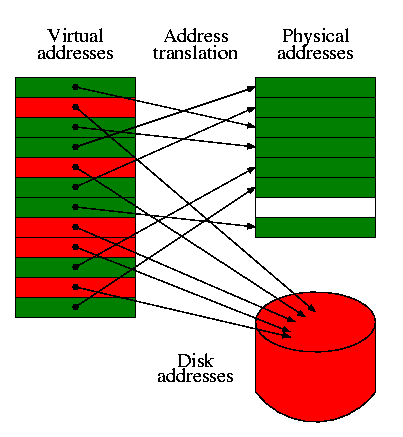Computer science,Scalar processor,Flynn's taxonomy,vector processor,superscalar processor,Parallel computing,Memory hierarchy,Virtual memory,Shared memory,advanced architecture and parallel processing
Computer science
Computer science is the scientific and practical approach to computation and its applications. It is the systematic study of the feasibility, structure, expression, and mechanization of the methodical procedures (or algorithms) that underlie the acquisition, representation, processing, storage, communication of, and access to information. An alternate, more succinct definition of computer science is the study of automating algorithmic processes that scale. A computer scientist specializes in the theory of computation and the design of computational systems.
Scalar processor
Scalar processors represent a class of computer processors. A scalar processor processes only one datum at a time, with typical data items being integers or floating point numbers). A scalar processor is classified as a SISD processor (Single Instructions, Single Data) in Flynn's taxonomy.
Flynn's taxonomy
Flynn's taxonomy is a classification of computer architectures, proposed by Michael J. Flynn in 1966. The classification system has stuck, and has been used as a tool in design of modern processors and their functionalities. Since the rise of multiprocessing central processing units (CPUs), a multiprogramming context has evolved as an extension of the classification system.
vector processor
vector processor a single instruction operates simultaneously on multiple data items (referred to as "SIMD"). The difference is analogous to the difference between scalar and vector arithmetic.
superscalar processor
A superscalar processor, on the other hand, executes more than one instruction during a clock cycle by simultaneously dispatching multiple instructions to redundant functional units on the processor. Each functional unit is not a separate CPU core but an execution resource within a single CPU such as an arithmetic logic unit, a bit shifter, or a multiplier.
A superscalar processor is a CPU that implements a form of parallelism called instruction-level parallelism within a single processor. It therefore allows for more throughput (the number of instructions that can be executed in a unit of time) than would otherwise be possible at a given clock rate. A superscalar processor can execute more than one instruction during a clock cycle by simultaneously dispatching multiple instructions to different execution units on the processor. Each execution unit is not a separate processor (or a core if the processor is a multi-core processor), but an execution resource within a single CPU such as an arithmetic logic unit.
Parallel computing
Parallel computing is a type of computation in which many calculations are carried out simultaneously, or the execution of processes are carried out simultaneously. Large problems can often be divided into smaller ones, which can then be solved at the same time. There are several different forms of parallel computing: bit-level, instruction-level, data, and task parallelism. Parallelism has been employed for many years, mainly in high-performance computing, but interest in it has grown lately due to the physical constraints preventing frequency scaling. As power consumption (and consequently heat generation) by computers has become a concern in recent years, parallel computing has become the dominant paradigm in computer architecture, mainly in the form of multi-core processors.
Memory hierarchy
In computer architecture the memory hierarchy is a concept used for storing & discussing performance issues in computer architectural design, algorithm predictions, and the lower level programming constructs such as involving locality of reference. The memory hierarchy in computer storage distinguishes each level in the hierarchy by response time. Since response time, complexity, and capacity are related, the levels may also be distinguished by their performance and controlling technologies.
Virtual memory
In computing, virtual memory is a memory management technique that is implemented using both hardware and software. It maps memory addresses used by a program, called virtual addresses, into physical addresses in computer memory. Main storage as seen by a process or task appears as a contiguous address space or collection of contiguous segments. The operating system manages virtual address spaces and the assignment of real memory to virtual memory. Address translation hardware in the CPU, often referred to as a memory management unit or MMU, automatically translates virtual addresses to physical addresses. Software within the operating system may extend these capabilities to provide a virtual address space that can exceed the capacity of real memory and thus reference more memory than is physically present in the computer.
Shared memory
In computer science, shared memory is memory that may be simultaneously accessed by multiple programs with an intent to provide communication among them or avoid redundant copies. Shared memory is an efficient means of passing data between programs. Depending on context, programs may run on a single processor or on multiple separate processors.
trending keywords on this topic / related keywords / trending hashtags
advanced architecture and parallel processing
parallel computer methods
the state of computing
multiprocessor and multi computers
multi vector and simd computers
pram and vlsi models
architectural development tracks
program and network properties
condition of parallelism
program partitioning and scheduling
program flow mechanism
system interconnect architecture
principles of scalable performance
performance matricides and measures
parallel processing applications
speedup performance laws
scalability analysis and approaches
processors and memory hierarchy
advanced processor technology
super scalar and vector processors
memory hierarchy technology
virtual memory technology
bus,cache and shared memory
bus system
cache memory organizations
shared memory organization
sequential and weak consistency models
pipelining and super scalar techniques
linear pipeline processors
non linear pipeline processors
instruction pipeline design
arithmetic pipeline design
parallel and scalable architectures
multiprocessor system interconnect
cache coherence and synchronization mechanism
three generations of multi computers
message passing mechanism
vector processing principles
simd computer organization
principles of multi threading
fine grain multi computers
parallel programming
parallel programming models
parallel language and compilers
dependency analysis
code optimization and scheduling
loop parallelization
mpi and pvm libraries
instruction level parallelism
design issue
models of typical processor
compiler directed instruction level parallelism
operand forwarding
tomusulo's algorithm
branch prediction
thread level parallelism








